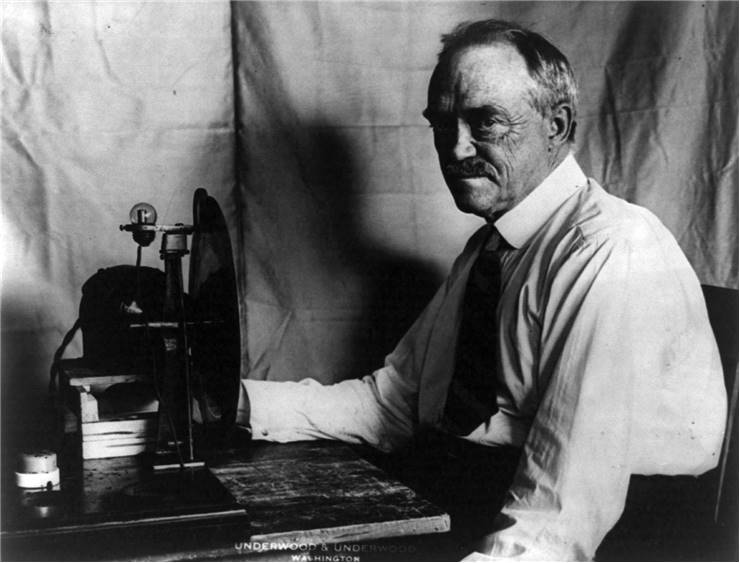Charles Francis Jenkins - The first recipient of television license in the United States
Charles Francis Jenkins ( August 22, 1867 - June 6, 1934) was a famous American inventor who specialized in cinema and television. His efforts from late 20th and early 21st century proved to be instrumental in developing of television and camera technology, enabling the creation of modern television industry. Even though he primarily explored mechanical television projectors, he managed to produce cheap devices that enabled him to become holder of first commercial television license in the United States.
Jenkins was born in in Dayton, Ohio, and has spent his youth near Richmond, Indiana before moving to Washington, D.C. in 1890. After working as a stenographer he started forming his plans for building mechanical movie projector. In 1881 he quit his job and dedicated his fully in building his dream. Together with the help of his classmate Thomas Armat he build Phantascope, first television set that was showcased to the American public in 1886 Cotton States Exhibition in Atlanta. Sadly immediately after this initial successful promotion Jenkins and Arman parted his ways and following court battle left Jenkins without patent rights for his Phantascope.

While Thomas Armat joined Thomas Edison and help him build his commercial projector Vitascope, Charles Jenkins continued working on television. In 1923 he managed to publicly showcase transfer of image from one set to another, and two years later he even managed to synchronize video and audio. Drying those years Jenkins Television Corporation successfully secured patents for his work, and most importantly U.S. patent No. 1,544,156 for “Transmitting Pictures over Wireless”.
All those advances made Jenkins the first recipient of television license in the United States. On July 2 1928 he started filming content from his broadcasting station called W3XK in Jenkins Labs in Washington. During following year, he expanded his reach by forming additional studio in Wheaton, Maryland from where he broadcasted five nights per week. Additionally, Jenkins product reached public acceptance after he offered inexpensive television sets that used integrated radio as a source of audio for his television broadcasts.
Popularity of Charles Jenkins mechanical television sets continued to rise until 1932 when electrical televisions based on Vladimir Zworykin and Philo Farnsworth designs finally started to overtake it. By that time Jenkins Television Corporation was sold to Lee DeForest (another influential inventor and industrialist of that time) and quickly after that to RCA, who moved its work on electrical television sets.
Even though Charles Francis Jenkins played very important role in the early life of television history, today he remains one of the lesser-known pioneers of the early years of television.
